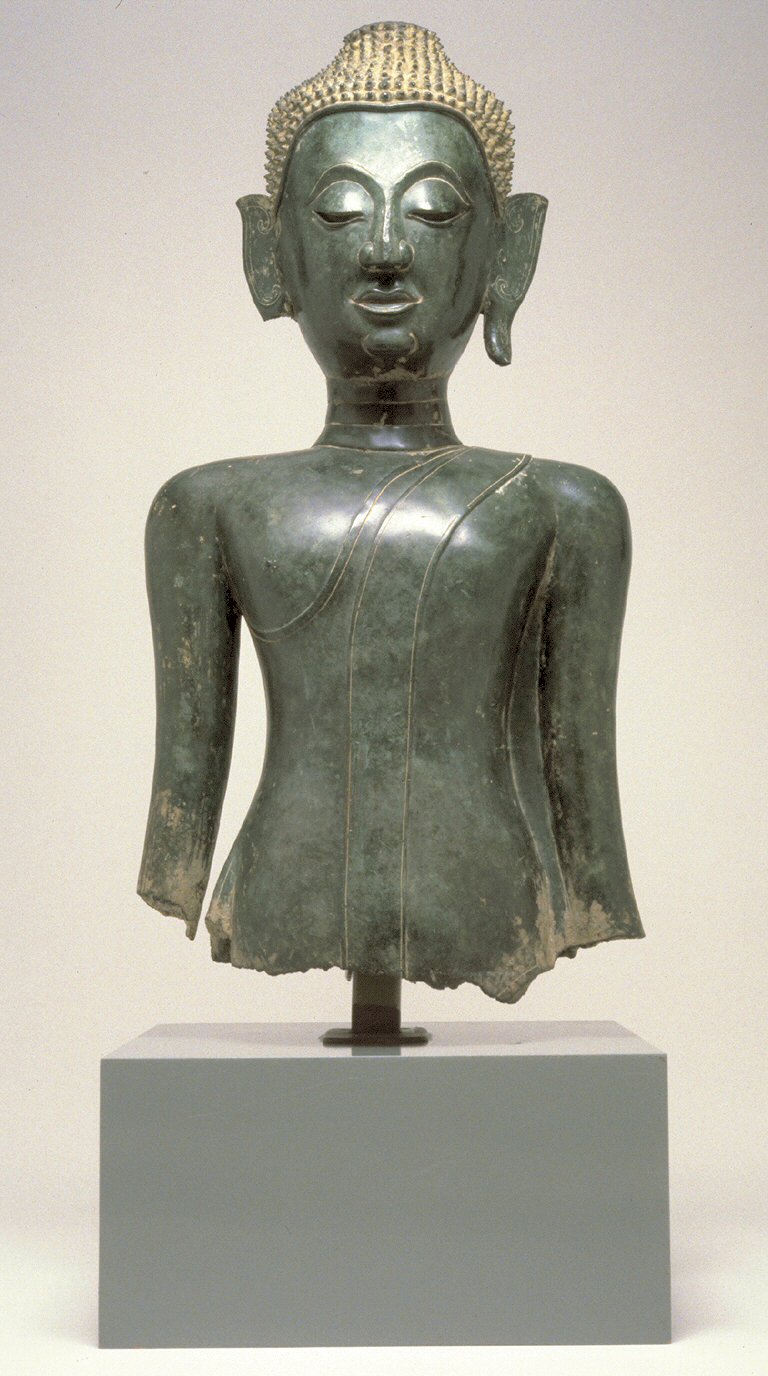Head and Torso of a Standing Buddha
(Southeast Asia )
Originally the arms of this large and striking image fell at the side, and the sides of the robe flared outward at the bottom, possibly with an inflected outline that echoed the curves of the ears. In the 16th century, standing images of this type were made in various parts of Lan Na, but most later examples are much later (19th century) works in wood. As this bronze was acquired in Paris, an Indochinese- i.e. Lao- origin seems probable. Related images can be seen today in Vientiane.
Because of its scale, sophisticated finishing, and technical mastery, this sculpture can be assumed to have come from a workshop accustomed to producing significant objects. An attribution to the time of King Surinyavongsa of Vientiane (r. ca. 1637-1694) could be proposed.
Inscription
Provenance
Provenance (from the French provenir, 'to come from/forth') is the chronology of the ownership, custody, or location of a historical object.
Paris; Alexander B. Griswold, Monkton, ca. 1951, [presented to the Breezewood Foundation, 1965, inv. no. 593]; Walters Art Museum, 1992, by bequest.
Exhibitions
| 1995 | Unearthly Elegance: Buddhist Art from the Griswold Collection. The Walters Art Gallery, Baltimore. |
Geographies
Laos (Place of Origin)
Measurements
H: 25 1/8 × W: 13 1/4 × D: 6 5/16 in. (63.8 × 33.7 × 16 cm)
Credit Line
Bequest of A. B. Griswold, 1992
Accession Number
In libraries, galleries, museums, and archives, an accession number is a unique identifier assigned to each object in the collection.
In libraries, galleries, museums, and archives, an accession number is a unique identifier assigned to each object in the collection.
54.2759


